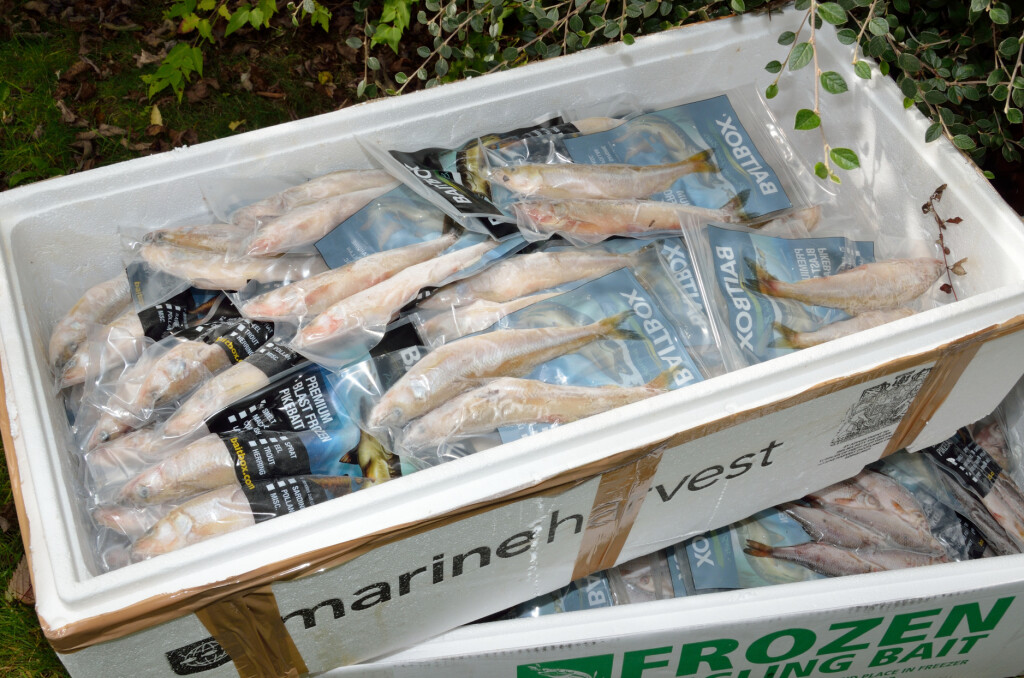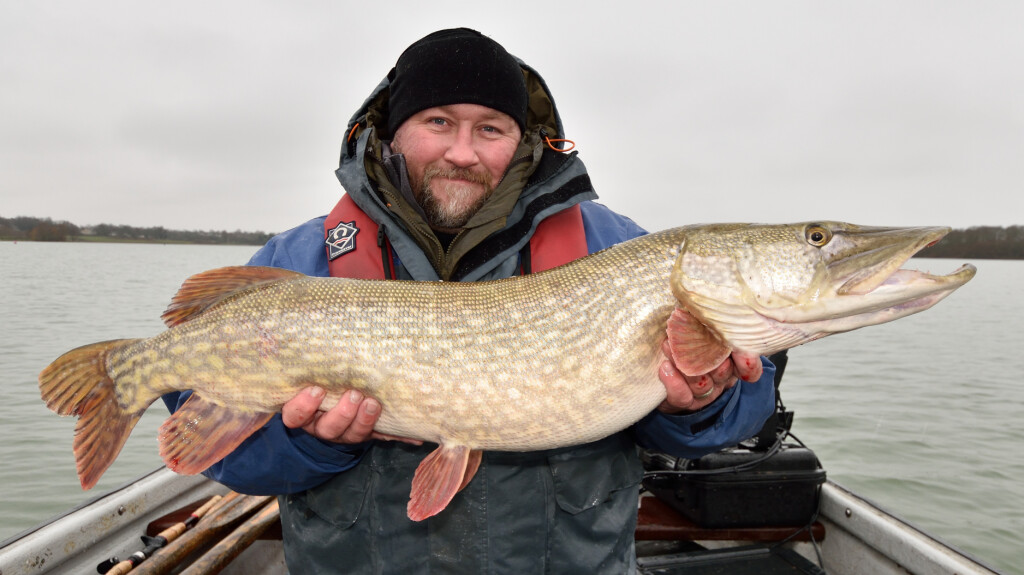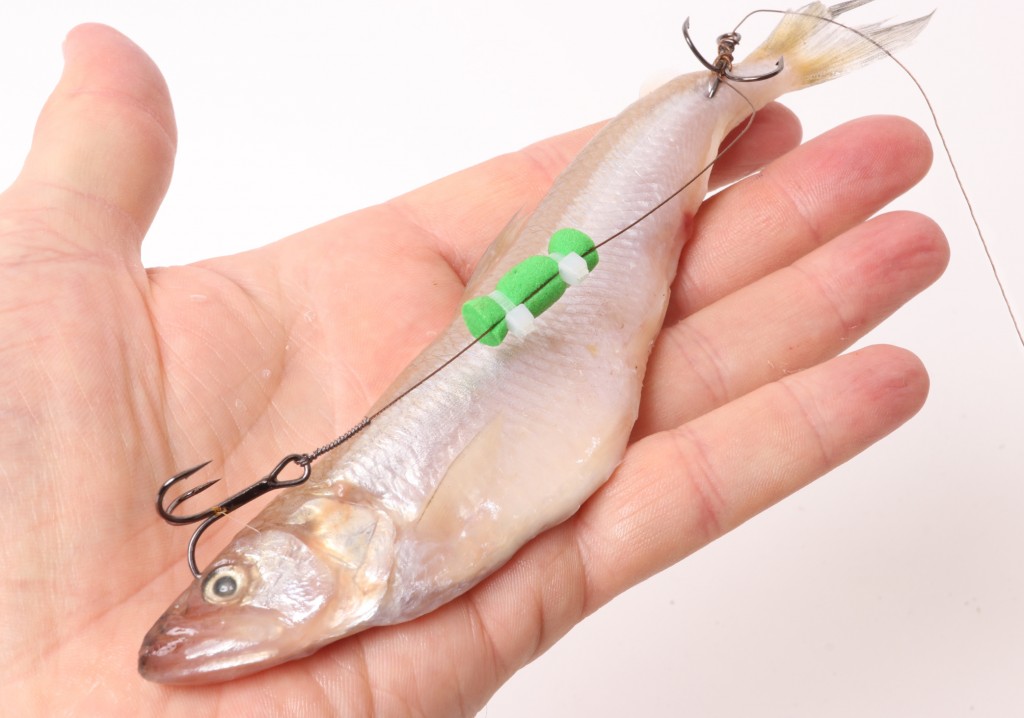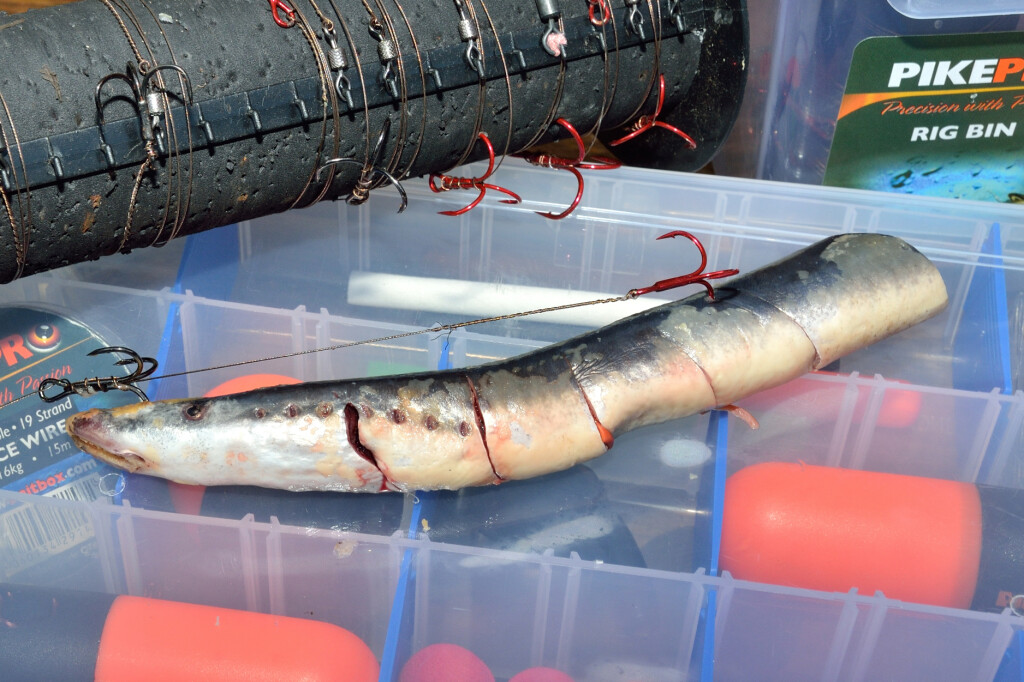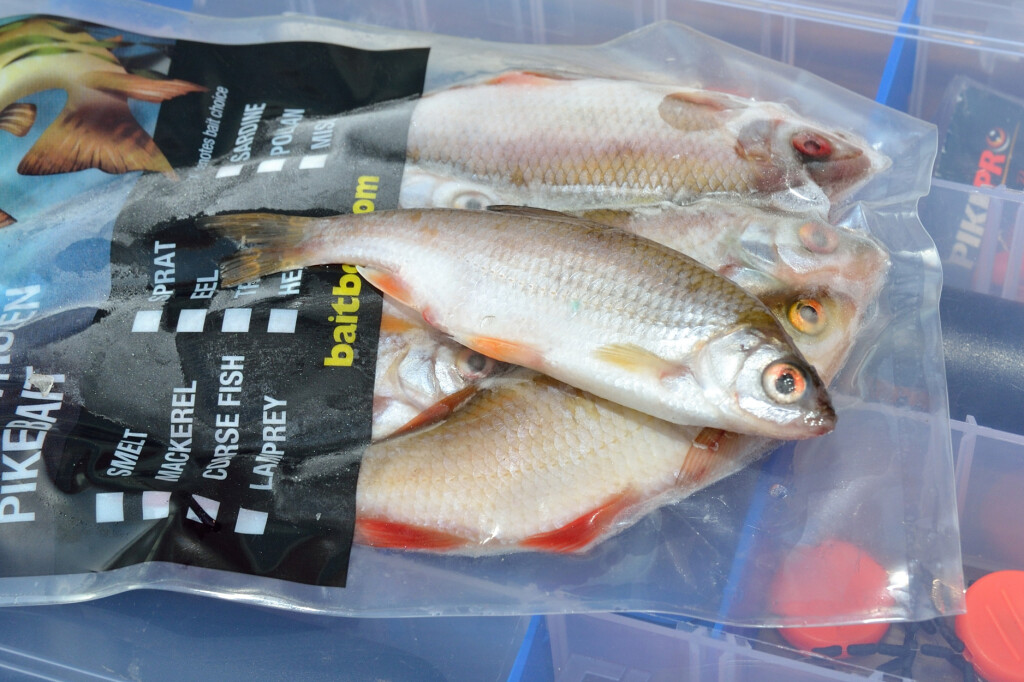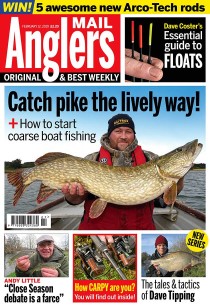Deadbaits!
Deadbaiting
When it gets really cold most pike anglers switch away from lures, and get the deadbaits out. This isn’t always the best choice, as you can always catch pike on lures even in the coolest conditions, but often it is the most comfortable way to fish when it’s cold. No more cold hands from repeated casting, you can sit under an umbrella out of the wind, and on top of all this it can be quite effective, too.
There are times when I find deadbaiting very effective, and this usually coincides with the first really cold weather. When water temperatures start to go below 10 degrees, pike tend to move to deeper water, and they become more concentrated in certain areas, if you know these areas, or can find them with a sonar, then you can really bag up by presenting static baits to them. Though, when it is cold pike are less likely to move around, the scent trail from a deadbait can often trigger a dormant fish to perk up and move a few feet for an easy meal.
I always use frozen deadbaits rather than fresh, simply because I believe they are more effective. This is because the freezing process changes the structure of the bait. The water inside the bait’s cells expands and some of the cell walls become damaged, which means that when it thaws out lots of scent is released, as the body juices leach through the bait. It is this scent trail which makes frozen deadbaits effective.
Frozen deadbaits are far more effective when fresh, and the best way to keep them that way is to use a quality freezer box / coolbag combination. If I am planning to go for a couple of days away, I pack my deadbaits in to an Icytek cool box with a couple of ice packs, and keep it in the car. This will keep them frozen for a least two days this way. I just take a few packs of deadbaits out when I need them, these I keep in a Pikepro coolbag on the bank.
Always try and use up any defrosted bait, as if its re-frozen it’s not as good, it is likely to be softer and more mushy and harder to keep on the hooks. I also think it loses its attractiveness to the pike. If I have any left over at the end of a session I either throw it in, or freeze it down for pre-bait.
Most of the time I find that deadbaits are most effective when fished hard on the bottom, as this is a natural presentation for them – pike are used to finding dead things on the bottom not hovering in mid-water, however sometimes it is useful to pop them up, certainly if the fish are off bottom or if there is a lot of weed this will be the way to fish, but in most instances a bait fished on the deck is a better choice.
A deadbait will nearly always settle hook side down in the water – this can lead to some problems such as hook-masking, or picking up debris. A simple way to prevent this is to add a little bit of buoyancy to the rig. By adding a bit of foam to the trace between the hooks it flips the bait over on the fall, and presents it the right way up. An added advantage of this method is that there is a subtle buoyancy in the bait – which means when a pike comes to suck it up it will be easy for it do so.
Top three baits
Certain deadbaits are more effective at different times of year. When it’s warmer I find oily deadbaits to be better – such as mackerel and herring. But as the water temperature drops below 10 degrees there are others that I prefer, these baits all have one thing in common they are less oily and have a scent that easily disperses in the water.
1. Smelt – this is possibly the first bait I will reach for out of my cool bag when the water temperature is low. Smelt have a proven track record for working well in cold water. There scent is unique, often described as “cucumber-esque”, it is certainly attractive to the pike. Not only do the pike like the smell and taste of these baits, their pale colour really makes them stand out on the bottom, so there is a good visual attraction as well. There is a downside to them in that they are often hard to get hold of, especially in the large or turbo sizes – which are often the ones the pike like the most.
2. Lamprey – Lampreys are long eel-shaped fish that are parasitic, and feed on the blood of other fish. Due to the way they feed they have an unnatural amount of blood in their bodies, which is one of the reasons they work so well when it gets cold. I prefer to fish a whole bait with the tail nipped off – this way there is a big target for the pike to home into, with a scent trail that will last quite a long time in the water. Lamprey are quite a tough bait and withstand recasting very well – to revitalise them after a soak in the water you can simply slash them, or squeeze them to get some more blood to flow out.
Again, like smelt there is a down side, and that is they can be hard to get hold of, and are also possibly one of the most expensive baits out there.
3. Coarse fish – I like using coarse fish, they are the natural prey of pike in any water, because of this I feel that pike can be less wary of picking them up off the bottom. They also have a distinct “fishy” scent that easily flows out in the water. I like roach and rudd as a preference, but most silver fish work well for pike and are freely available in most waters. Another advantage of advantage of using freshwater baits is that, in the right water, you could also pick up a zander if they are around. For pike I usually fish them whole or with a couple of stabs with a pair of scissors to let the flavour out quickly, for zander I prefer them tail hooked with the head cut off.
Tips;
Colouring baits;
Adding a splash of colour to your deadbait can work wonders on hard fished waters, I simply just the spay on colours you can get and spray the baits either singularly or put several in a bag and add a few squirts before shaking them around. It just makes your bait look a bit different to everything else that has being presented, and coming from a lure fishing perspective, the right colour will make all the difference. This is especially true if you are pre-baiting for the pike, adding a dash of colour to your pre-baits can make the pike preoccupied on that food source within that area, this is advantageous as it reduces the possibility of another angler accidently dropping on your pre-baited spot and bagging up, as most of them will be using the wrong coloured bait!
